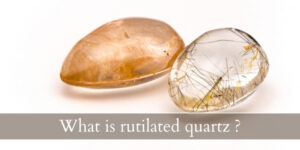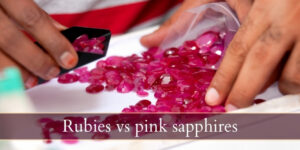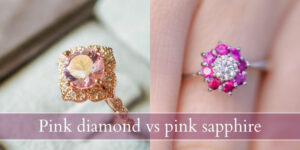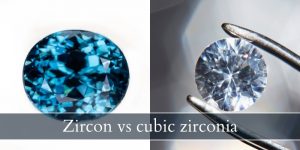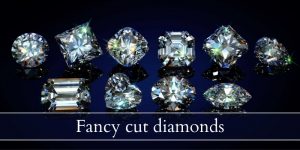Diamond color might not be something you think about but once you’re shopping for these gems everything becomes important, including its color grade. This post will focus on white or colorless diamonds, and not fancy color diamonds (covered here). There are several factors that drive the price of a diamond, and of them color and cut quality seem to be the most important because diamonds must sparkle and look absolutely crisp.
Of course, not all diamonds are the same and sometimes one diamond looks amazing but doesn’t sound so great on the report. But if it’s what you like, it’s what you like. Even lightly colored diamonds can be made into amazing jewelry, if you do it right. Let’s talk diamond colors, shall we ?
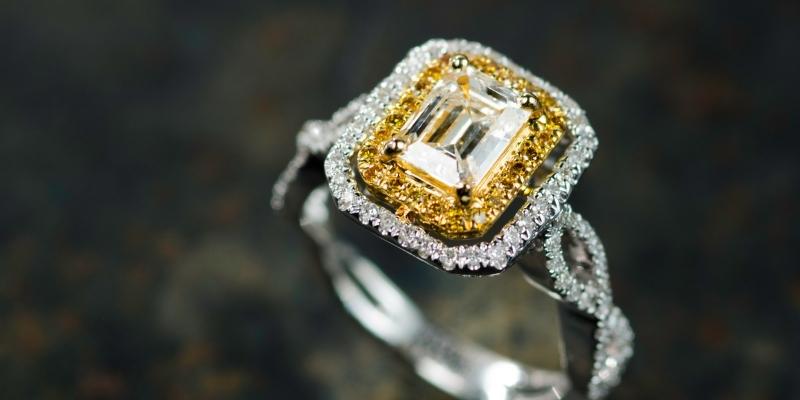
Diamond color grades explained
A diamond’s color grade is based on the presence or lack of presence of a yellow tinge within the diamond. There is no true white/clear diamond, which is why the perfect colorless diamonds start from D, and not A. There are several color categories, and here they are.
D, E, F diamonds are colorless. They appear clear, white, and without a noticeable yellow tint. D is white than E, which is whiter than F, and so on. The difference between a D and an F is only noticeable if you’re comparing them directly, and even then it’s not much. All three grades are excellent.
G, H, I, J diamonds are near-colorless and the ones you will usually see in engagement rings. These have a very, very slight yellow tint to them but it’s light enough that you can set them in platinum or white gold and they will still look white. Compare a D to an I diamond and you’ll see a yellow tint in the I.
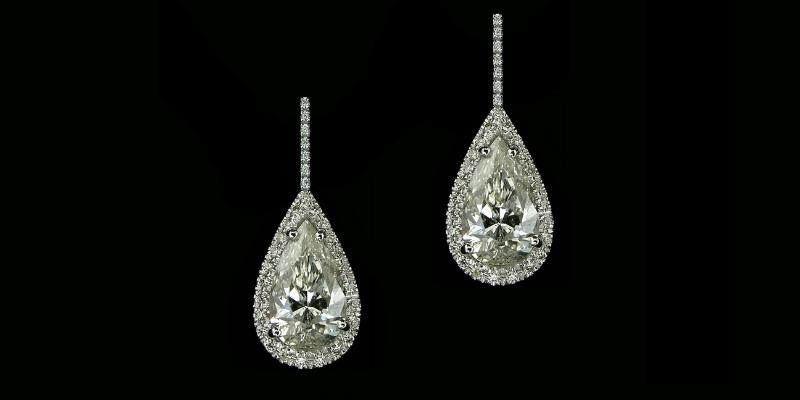
K, L, M are faint yellow diamonds, the ones that start to show faint but clearly visible yellow. These are noticeably warm diamonds, and they will appear very yellow compared to a D, and even a G. M is usually the lowest color grade most sellers will carry.
N through R are very light yellow diamonds, meaning they show more yellow than the faint category and they are almost crossing over into fancy color diamonds. These diamonds and the next category can’t be classed as warm anymore, they are noticeably yellow.
S through Z are light yellow diamonds, with more color than the previous category. These diamonds work great in other types of jewelry aside from the usual engagement ring. Jewelry where the color composition looks intentional and tonal, with varying degrees of yellow, brown, brandy, and chocolate.
This color grading system is the one you’re probably most familiar with, since it’s the one from GIA (the Gemological Institute of America). You can also find their chart explained in more detail here.
What is the real color of a diamond ?
The real color of a diamond is light yellow, since only very few diamonds are colorless or near-colorless. Most come out of the earth with a yellow tint, and this is due to the presence of nitrogen, the more nitrogen there is within the diamond structure, the stronger the yellow.
Diamonds can also have other colors, such a blue, green, red, pink, grey, and so on. These other colors are given by trace elements such as born (for blue), crystal lattice anomalies (for red), or a combination of them. Diamonds with significant color are called fancy color diamonds, and they’re generally rare ones, especially compared to the usual white ones you see for sale or mounted in jewelry.
Colorless and near colorless diamonds are top tier
When you’re shopping for diamonds for an engagement ring, you’re likely looking at D through J diamonds. These are the colorless and near-colorless ones, the most expensive and also the ones most in demand. And for good reason, since they have no color to impede their sparkle, and are what most people are looking for.
There’s a price to pay for top tier quality through. We explained the price drop from D to E to F and so on in this article, but in short the drop from D to E is about $2,000, and there is another significant drop from F to G (about $1000) and from there on it’s another $1,000 drop for every grade lower.

In short, you can find the same diamond (carat, cut quality, clarity, cut style) for $7,000 or $12,000 and the only difference is 3-4 color grades. If you’re someone who enjoys premium items then these differences will likely be important to you. However if you’re working with a set budget then you might find better value in the near-colorless range.
What is the best diamond color ?
The best diamond color is D, which is the clearest and whitest possible diamond color, in the colorless range (D-F). These diamonds have no discernible yellow tint, and as such are labeled as white or clear. They look very good in white metals, since they don’t have a yellow tint to them. They also look great in yellow metal, but keep in mind that if the prongs are yellow metal the diamond will pick up that color and appear a color grade lower (so a D will appear like an E). The usual workaround for this is using white metal for the prongs.
If you’re wondering which is the best color grade in terms of value for money, then it’s the G diamond. Still very light in color, but significantly cheaper than D-F diamonds.
Is it worth buying D-F diamonds ?
D-F diamonds are only worth it if you’re setting them in a white metal which may contrast with a lower color grade diamond. So if you’re setting in platinum or rhodium-plated white gold, a D-F diamond will work very well. Even so, you can easily set a G or even H diamond in white metal and have it look great. The trick is the white metal used for the prongs, which the diamond will pick up as white color.
It’s not our place to say whether a D, E, or F diamond is excessive or not. These three color grades are the absolute best when it comes to no yellow tint, so if you’re someone who appreciates the crisp white of a perfect diamond then you will surely go for the clearest diamond possible. If you’re fine with just a little color, then a G or H will do just fine.
Read also: Is Diamond Clarity Important ? Does Clarity Affect Sparkle ?
Keep in mind that not all diamond cuts show color the same. Brilliant cuts (like the round, the oval, the marquise, the radiant…the very sparkly ones) are good at hiding color but some of them may backfire on you. For example a round brilliant and radiant hide a whole color grade, but the tips of a marquise, oval, pear, and princess will concentrate the color.
Meanwhile step cuts will show any color they have, so if you’re going to an emerald cut or an Asscher cut, you want to go for the higher color grades and also the higher clarity ones. Why ? because step cuts have very few facets to bounce the light off of, so they will easily show any imperfections within the diamond. In many cases you can see directly into the diamond, and if you turn the diamond on its side you will see its true color.
Are G-J diamonds worth buying ?
Yes, G through J diamonds are a very good choice for most people since they offer very little yellow tint for a lower price than the colorless range (D-F). The difference in color between colorless and near-colorless is very small, and unless you are actively comparing two diamonds of different grades you won’t easily see a difference.
So yes, G-J diamonds are a good choice and the extra money can go into the ring design, better clarity, a better quality cut, or anything else you can think of that can improve the diamond or ring.
Do not mix diamond color grades
Since we’re discussing diamond color grades, we feel obligated to mention that you should not mix color grades when setting different diamonds into the same jewelry. For example if you’re having a multi stone ring made, get all your diamonds in the same color grade. When all the stones are set next to each other, the difference in color will be noticeable and you won’t get a very good effect.
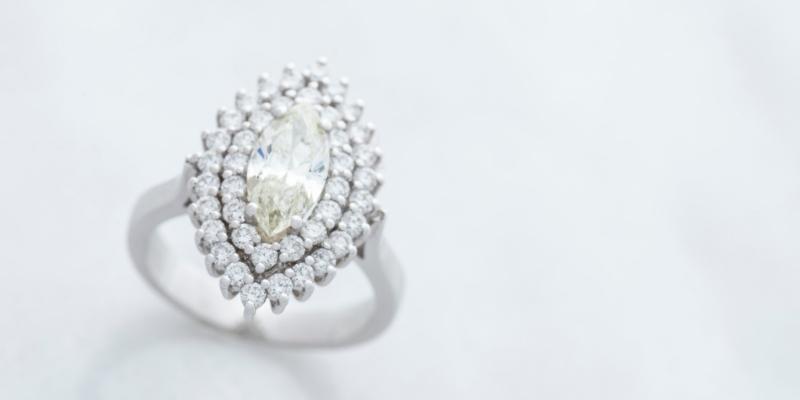
Mixing colors only works if you’re using significantly different grades, like a completely colorless and a noticeably tinted diamond, or going for an ombre effect.
But if you’re getting something like a halo ring, make sure the diamonds in the halo are the same color as the one in the center. The clarity can be a little lower in the halo, but not the color. The same goes for side stones. Clarity can be maybe a little lower, but not the color.

I’m the main author for jewelrymaterialguide.com. I started this site after we did tons of research before our wedding and noticed that there is information about rings, jewelry, and so on that is really hard to find on the internet.

